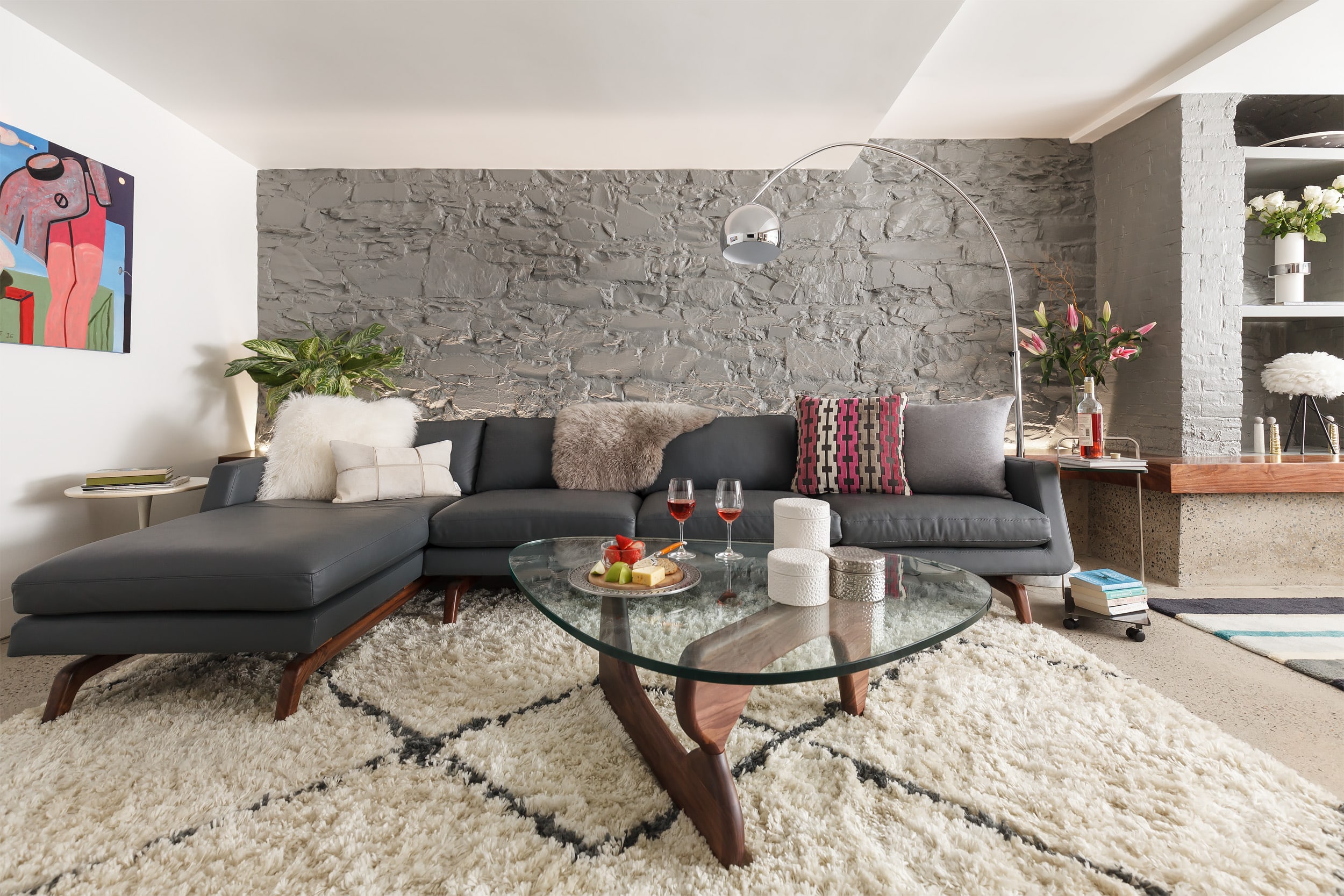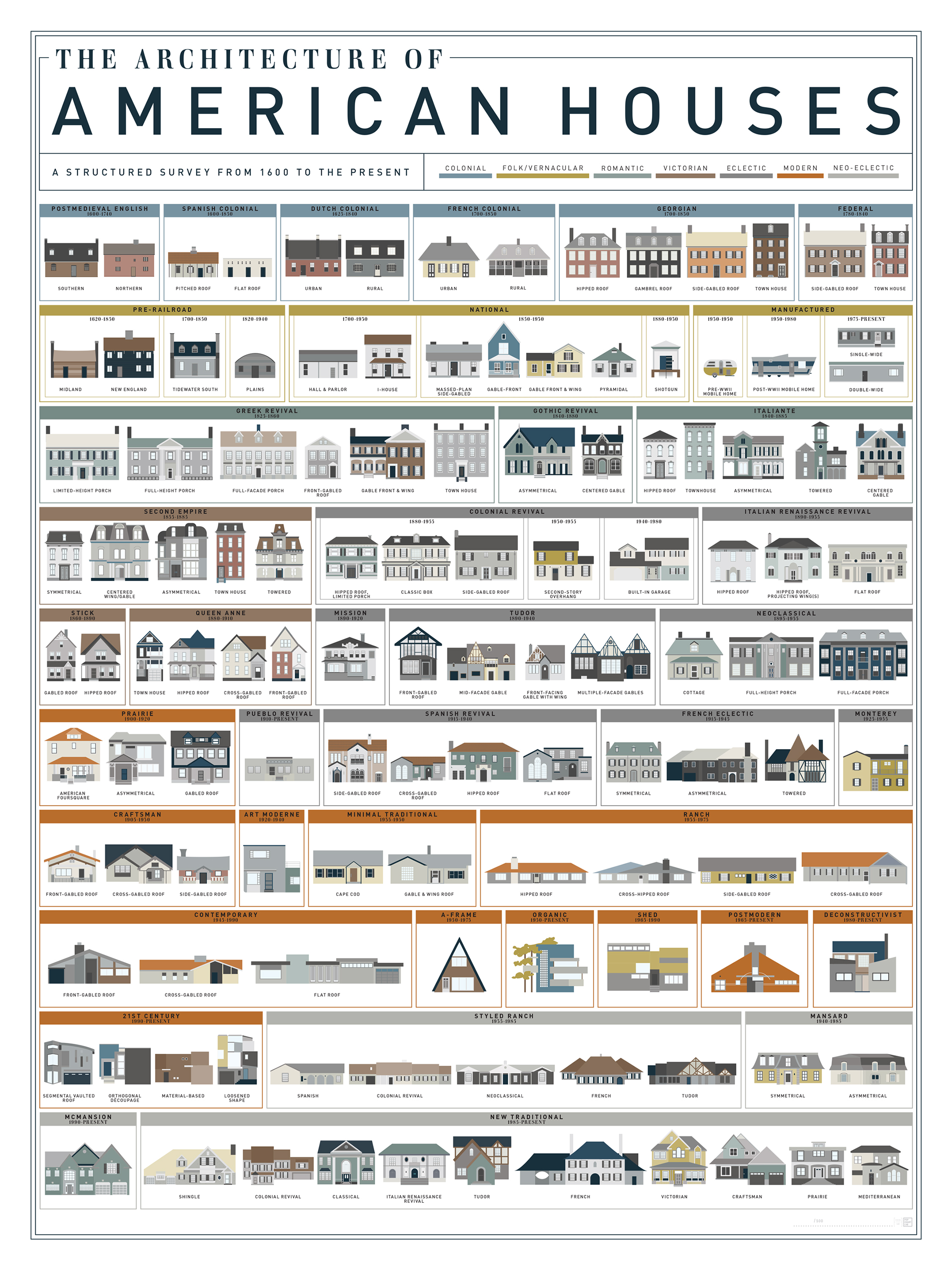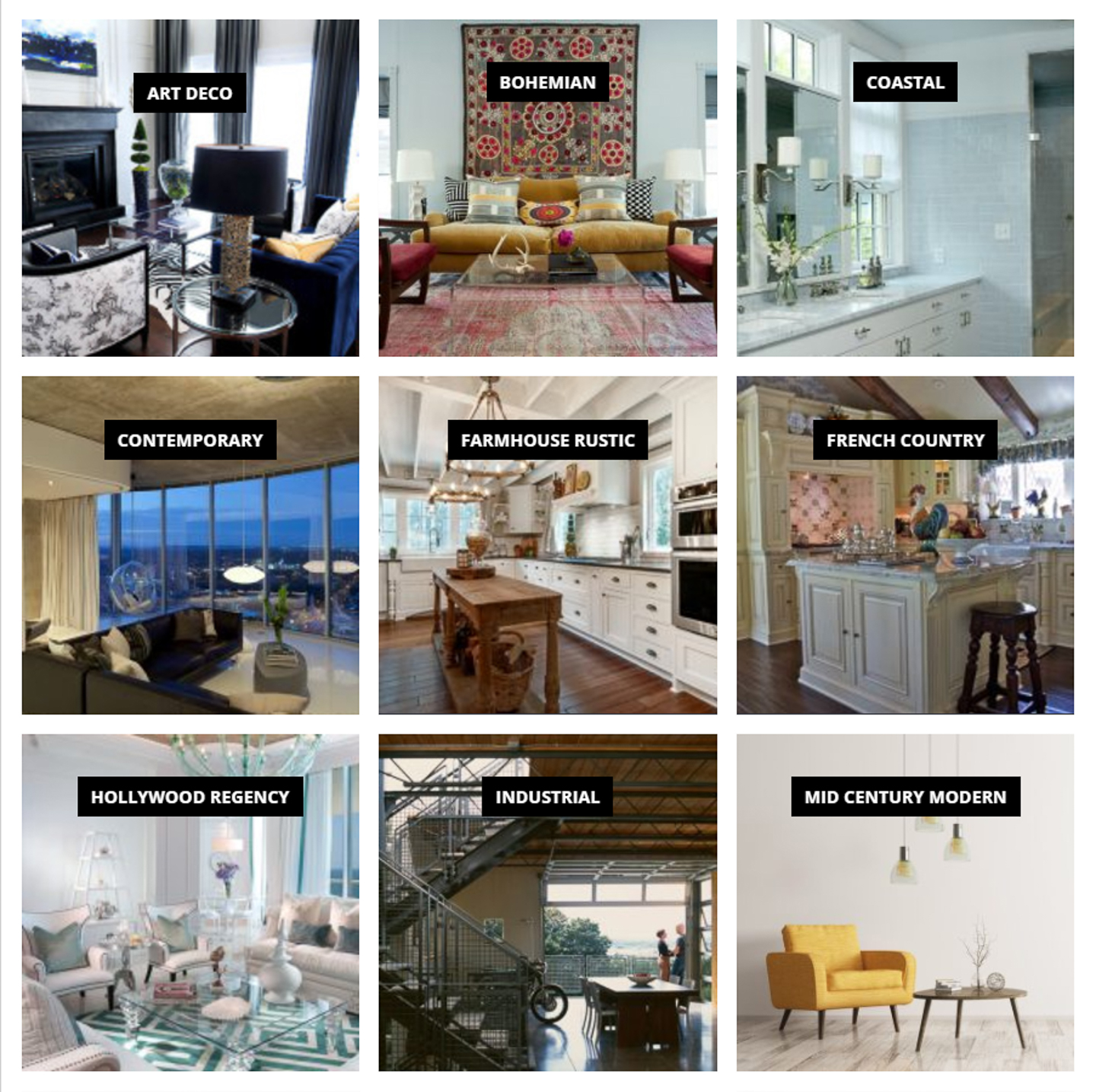Exploring The Allure Of Home Design Styles: A Comprehensive Guide
Exploring the Allure of Home Design Styles: A Comprehensive Guide
Related Articles: Exploring the Allure of Home Design Styles: A Comprehensive Guide
Introduction
In this auspicious occasion, we are delighted to delve into the intriguing topic related to Exploring the Allure of Home Design Styles: A Comprehensive Guide. Let’s weave interesting information and offer fresh perspectives to the readers.
Table of Content
Exploring the Allure of Home Design Styles: A Comprehensive Guide

The design of a home is more than just aesthetics; it’s a reflection of personal taste, lifestyle, and aspirations. With a vast array of design styles available, understanding the nuances and appeal of each can be an enriching journey towards creating a space that resonates deeply. This exploration aims to provide a comprehensive understanding of various home design styles, delving into their defining characteristics, historical origins, and the unique ambiance they evoke.
A Journey Through Design Styles:
1. Traditional: This style embodies timeless elegance and sophistication, often drawing inspiration from historical periods like the Victorian, Georgian, or Colonial eras. Characterized by intricate details, rich colors, and luxurious fabrics, traditional design exudes a sense of history and refinement.
- Key Features: Symmetrical layouts, ornate moldings, fireplaces, heavy draperies, antique furniture, and warm color palettes.
- Ambiance: Classic, formal, and inviting.
- Benefits: Creates a sense of permanence and stability, evokes a feeling of comfort and warmth, and complements a wide range of decor.
2. Modern: In stark contrast to traditional design, modern style embraces simplicity, clean lines, and functionality. Originating in the early 20th century, it prioritizes open spaces, minimalist furnishings, and a focus on natural light.
- Key Features: Geometric shapes, neutral color palettes, minimal ornamentation, open floor plans, and sleek furniture.
- Ambiance: Minimalist, sophisticated, and airy.
- Benefits: Promotes a sense of calm and order, maximizes space, and fosters a contemporary aesthetic.
3. Contemporary: Often confused with modern, contemporary design is more fluid and embraces current trends. While it shares the minimalist aesthetic of modern style, contemporary design incorporates a wider range of materials, textures, and colors.
- Key Features: Open floor plans, bold colors, natural materials, and a focus on functionality.
- Ambiance: Modern, eclectic, and inviting.
- Benefits: Adaptable to evolving trends, promotes a sense of individuality, and embraces a blend of styles.
4. Farmhouse: Rooted in rustic charm and practicality, farmhouse style evokes a sense of cozy warmth and simplicity. Often characterized by reclaimed wood, natural textiles, and a focus on comfort, it brings the outdoors inside.
- Key Features: Exposed beams, distressed wood, vintage accents, light color palettes, and a focus on natural textures.
- Ambiance: Rustic, cozy, and inviting.
- Benefits: Creates a warm and welcoming atmosphere, embraces a sense of history and heritage, and promotes a connection with nature.
5. Industrial: Inspired by the raw beauty of factories and warehouses, industrial design embraces exposed brick, metal accents, and a utilitarian aesthetic. It celebrates the imperfections of industrial materials, creating a unique and edgy ambiance.
- Key Features: Exposed brick, metal pipes, concrete floors, vintage lighting, and reclaimed furniture.
- Ambiance: Raw, edgy, and urban.
- Benefits: Creates a unique and dramatic atmosphere, embraces a sense of history and authenticity, and promotes a minimalist aesthetic.
6. Mediterranean: Drawing inspiration from the sunny shores of the Mediterranean, this style evokes a sense of relaxed elegance and warmth. Characterized by earthy tones, terracotta tiles, and intricate details, it embraces a laid-back lifestyle.
- Key Features: Arched doorways, terracotta tiles, whitewashed walls, vibrant colors, and natural materials.
- Ambiance: Relaxed, warm, and inviting.
- Benefits: Creates a sense of calm and serenity, promotes a connection with nature, and evokes a sense of travel and adventure.
7. Scandinavian: Originating in the Nordic countries, Scandinavian design emphasizes simplicity, functionality, and natural light. Known for its clean lines, light wood, and muted color palettes, it creates a sense of tranquility and comfort.
- Key Features: Minimalist furniture, light wood accents, neutral color palettes, natural light, and a focus on functionality.
- Ambiance: Minimalist, cozy, and inviting.
- Benefits: Promotes a sense of calm and order, maximizes space, and embraces a sense of warmth and comfort.
8. Bohemian: Embracing a free-spirited and eclectic aesthetic, Bohemian style celebrates individuality and a love for the unconventional. It blends vintage finds, global influences, and a vibrant color palette to create a unique and personal space.
- Key Features: Eclectic furniture, vibrant colors, patterned textiles, global accents, and a mix of textures.
- Ambiance: Eclectic, colorful, and inviting.
- Benefits: Promotes a sense of individuality and creativity, embraces a global aesthetic, and fosters a sense of warmth and comfort.
9. Coastal: Inspired by the relaxed lifestyle and natural beauty of coastal regions, this style embraces a sense of calm and serenity. It features light and airy color palettes, natural materials, and nautical accents to create a beachy ambiance.
- Key Features: Light and airy color palettes, natural materials, nautical accents, and a focus on natural light.
- Ambiance: Relaxed, airy, and inviting.
- Benefits: Promotes a sense of calm and serenity, embraces a connection with nature, and evokes a sense of relaxation and escape.
10. Transitional: Bridging the gap between traditional and modern styles, transitional design offers a harmonious blend of classic elements with contemporary accents. It creates a sophisticated and inviting ambiance without being overly formal or minimalist.
- Key Features: Classic furniture silhouettes with modern details, neutral color palettes, and a focus on comfort and functionality.
- Ambiance: Sophisticated, comfortable, and inviting.
- Benefits: Offers a balanced approach to design, embraces both classic and modern elements, and creates a timeless and versatile aesthetic.
Understanding the Importance of Design Styles:
Beyond aesthetics, choosing a design style plays a crucial role in shaping the overall feel and functionality of a home. It influences everything from furniture selection and color palettes to the layout of spaces and the flow of movement.
1. Defining Your Lifestyle: Different design styles cater to different lifestyles. A minimalist modern home may suit a busy professional seeking calm and order, while a rustic farmhouse style could be ideal for a family seeking warmth and comfort.
2. Reflecting Your Personality: Your home should be a reflection of your personality and taste. Choosing a design style that resonates with you allows you to express yourself and create a space that feels truly your own.
3. Enhancing Functionality: Design styles can influence the functionality of a space. Open floor plans in modern and contemporary styles promote flow and connectivity, while traditional layouts often prioritize defined spaces for specific purposes.
4. Creating a Unique Ambiance: Each design style evokes a distinct ambiance. A Mediterranean home exudes a sense of relaxed elegance, while an industrial space offers a raw and edgy aesthetic. Choosing a style that aligns with your desired ambiance can transform your home into a haven of peace, energy, or inspiration.
FAQs:
Q: Can I blend different design styles in my home?
A: Absolutely! Eclectic design embraces a mix of styles, creating a unique and personal aesthetic. However, it’s important to maintain a cohesive look by selecting a dominant style and incorporating other elements as accents.
Q: How do I determine the best design style for my home?
A: Consider your personal preferences, lifestyle, and the overall architecture of your home. Explore different styles and gather inspiration from magazines, websites, and design professionals.
Q: Can I change my home’s design style over time?
A: Yes, design styles are not set in stone. As your taste evolves, you can gradually update your home’s decor to reflect your changing preferences.
Tips for Choosing a Design Style:
- Define your personal style: Reflect on your preferences for colors, textures, and overall aesthetics.
- Consider your lifestyle: Think about how you live and entertain, and choose a style that complements your daily routines.
- Explore different styles: Research various design styles and gather inspiration from diverse sources.
- Visit showrooms and model homes: Experience different design styles firsthand to get a feel for their ambiance.
- Consult with a design professional: Seek expert advice from an interior designer or architect to create a cohesive and functional design.
Conclusion:
The art of home design is an ongoing journey of self-discovery and expression. By understanding the nuances and appeal of various design styles, you can create a space that reflects your unique personality, complements your lifestyle, and fosters a sense of well-being. Whether you embrace the timeless elegance of traditional design, the minimalist sophistication of modern style, or the eclectic charm of Bohemian decor, the ultimate goal is to create a home that feels both beautiful and truly your own.








Closure
Thus, we hope this article has provided valuable insights into Exploring the Allure of Home Design Styles: A Comprehensive Guide. We hope you find this article informative and beneficial. See you in our next article!
You may also like
Recent Posts
- Shaping The Homes Of Tomorrow: Home Decor Trends For 2025
- Navigating The Evolving Landscape Of Home Decor Trends: A Comprehensive Guide
- Weaving History And Home: A Guide To Unique Vintage Farmhouse Decor
- The Enduring Appeal Of Wooden Duck Home Decor: A Timeless Symbol Of Nature And Serenity
- Beyond The Ordinary: A Guide To Unique Home Decor Accessories
- Navigating The Fast Fashion Landscape: Exploring Alternatives To SHEIN
- A Global Network Of Home Improvement: The Reach Of The Home Depot
- Finding The Perfect Pieces: A Guide To Home Decor Shopping
Leave a Reply